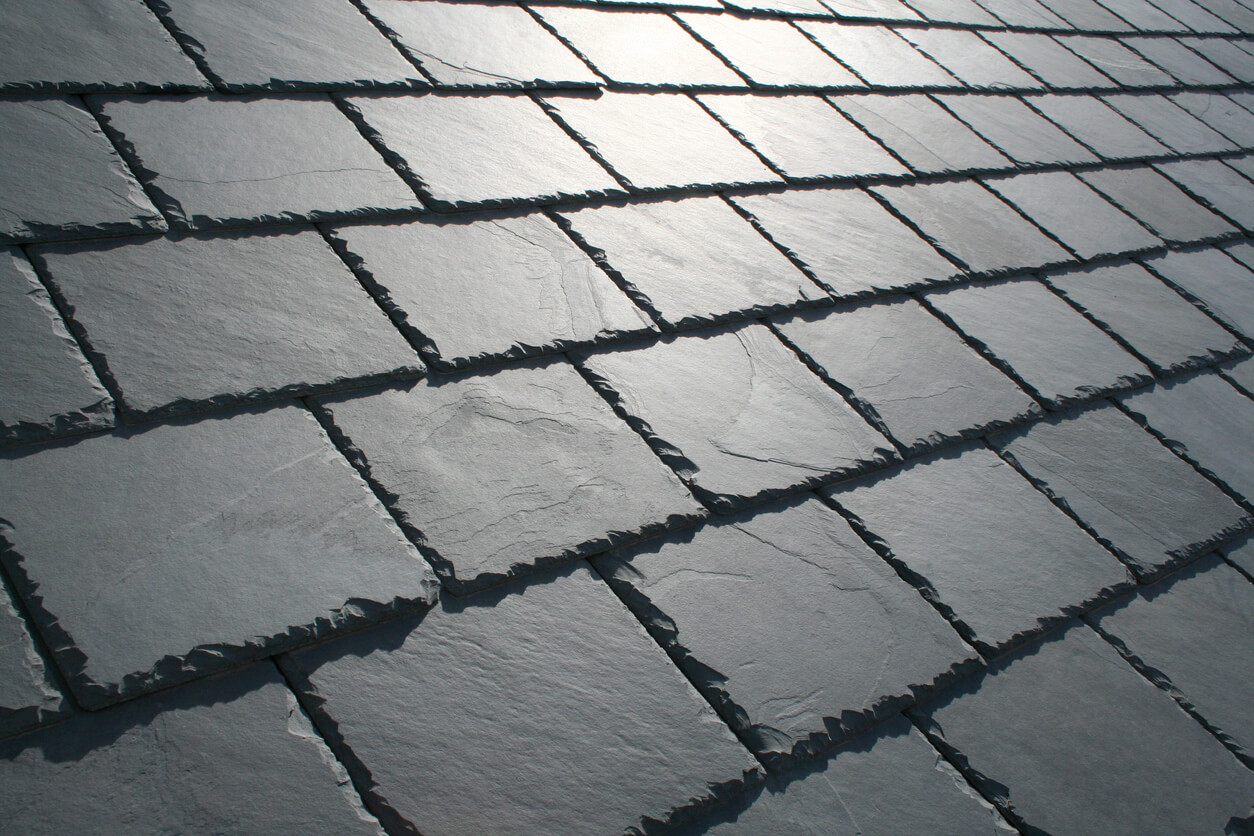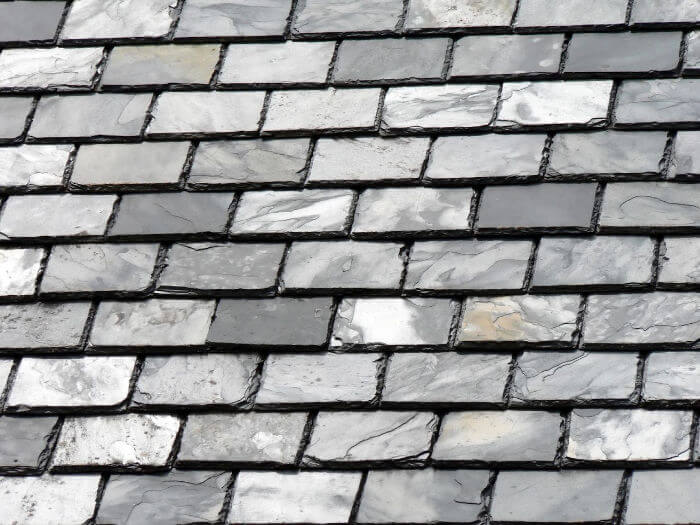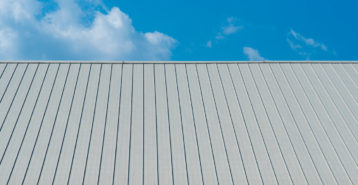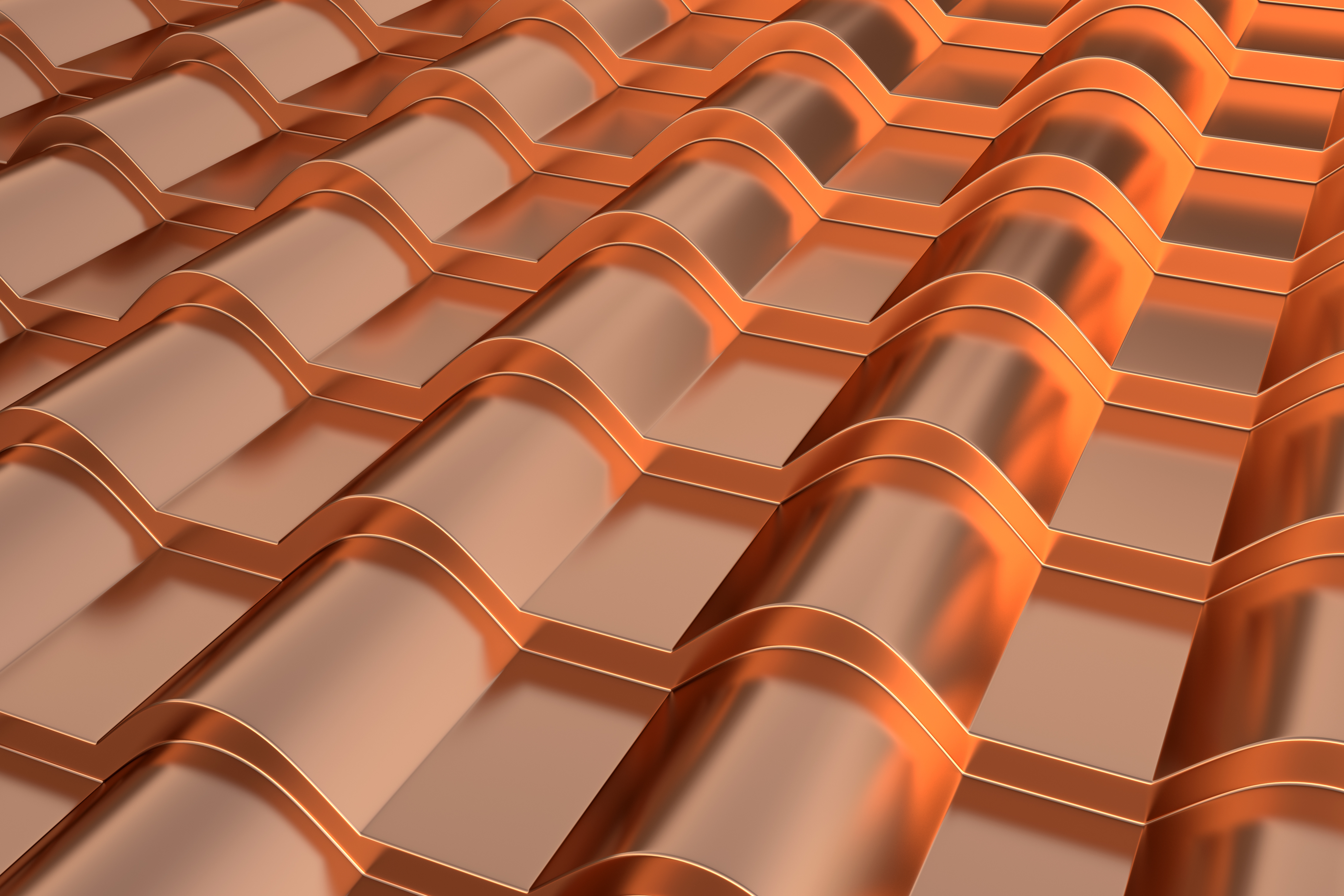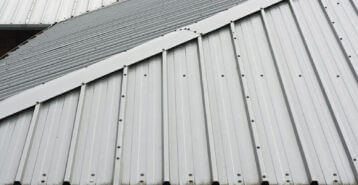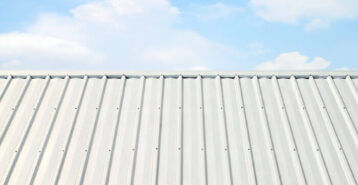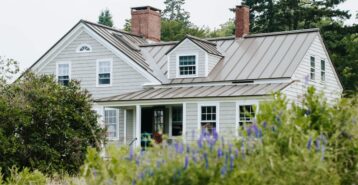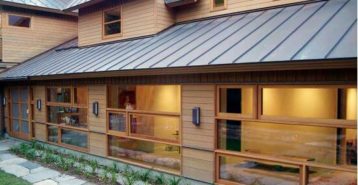What Is Stone-Coated Steel Roofing?
Stone-coated steel roofing features a strong steel core that manufacturers coat with a zinc-aluminum alloy and finish with a layer of stone granules. Manufacturers bond these granules to the metal with acrylic resin, giving the roof a natural, textured appearance and extra protection from the elements.
How It’s Different from Traditional Metal Roofing
Traditional metal roofing often has a smooth, shiny surface. Stone-coated steel roofing, on the other hand, has a dimensional, textured look that mimics high-end roofing styles like slate or clay tile. It gives homeowners all the performance of metal, with the visual warmth of more classic materials.
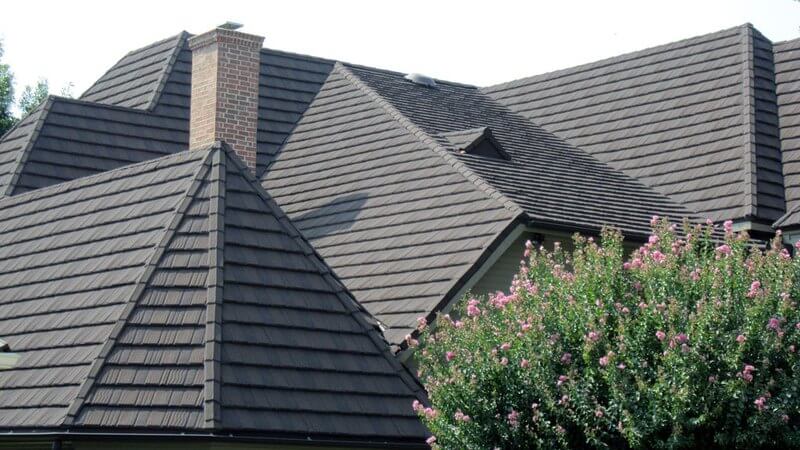
Cost of Stone-Coated Steel Roofing
While stone-coated steel roofing generally costs more up front than other roofing types, its long lifespan and reliable performance offer strong value over time.
Average Price per Square Foot
You can expect to pay between $10 to $18 per square foot for a stone-coated steel roof. This includes both materials and professional installation. For a typical 2,000-square-foot roof, that brings the total to around $20,000 to $36,000.
Installation Costs
Labor costs usually range from $3 to $8 per square foot, depending on your home’s layout and the complexity of the roof. Meanwhile, material costs typically range from $5 to $10 per square foot.
Long-Term Value and Return on Investment
Although it has a higher upfront cost, a stone-coated steel roof can last 40 to 70 years or more. Its energy efficiency, low maintenance, and strong resale value can save you money in the long run. Plus, many homeowners see reduced insurance premiums thanks to its durability and fire resistance.
Stone-Coated Steel Roof Styles
One of the biggest perks of stone-coated steel roofing is its ability to match the look of other popular roofing materials, without sacrificing performance. Whether your home has a classic or modern design, there’s a style that can blend right in.
Stone-coated steel roofing can be designed to resemble:
- Mediterranean or Spanish Tile: Mimics the rounded, barrel-shaped clay tiles often seen on stucco homes.
- Wood Shake: Looks like natural hand-split wood shakes, bringing a rustic, textured feel to your roof.
- Slate: Offers a clean, flat appearance similar to real slate tile — perfect for a sleek, elegant finish.
- Asphalt Shingles: Matches the profile of traditional three-tab or architectural shingles while boosting durability.
- Standing Seam Metal: Features vertical seams and a bold, modern aesthetic for contemporary or industrial-style homes.
How Stone-Coated Steel Roofing Is Made
Stone-coated steel roofing is engineered for strength and style. Let’s take a closer look at how each layer comes together to create a long-lasting and visually appealing roof:
Starts with a Galvanized Steel Core
Manufacturers begin with a steel sheet and galvanize it to protect against rust and corrosion. They add a zinc-aluminum alloy for an extra layer of defense against extreme weather, moisture, and UV rays.
Add the Adhesive Base Layer
Next, they coat the steel panel with an acrylic resin base. This layer serves as the glue that bonds the stone granules to the surface of the panel. It also serves as a moisture barrier, helping the roof stand up to years of wear.
Apply Natural Stone Granules
After applying the adhesive layer, manufacturers crush and screen stone granules, typically made from ceramic or basalt, to ensure consistent size and shape. They’re selected for:
- Hardness to resist impact
- Low porosity to prevent water absorption
- Minimal iron content to avoid rust
- Durability under UV exposure and temperature changes
Add Color with High-Temperature Pigment Coating
Then, manufacturers apply pigments to the granules and bake them at high heat, similar to ceramic glazing. This process ensures the color stays vibrant and resists fading, even after years of sun exposure.
Finish with Granule Embedding
Technicians embed the colored granules into the adhesive layer using precision equipment. This final step gives the roofing its textured appearance while the granules lock securely into place.
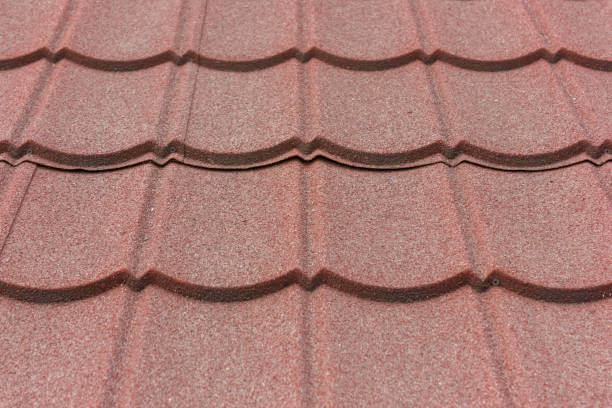
Stone-Coated Steel vs. Natural Stone Roofing
Both homeowners and contractors often choose stone-coated steel and natural stone roofs for their beauty and performance, but they differ in cost, weight, and ease of installation.
Benefits
Stone-coated steel roofing comes with several advantages that make it a good investment for many homeowners.
- Long-Lasting: Built to last several decades with minimal maintenance.
- Weather Resistant: Handles wind, rain, hail, and fire (Class A fire-rated).
- Energy Efficient: Reflects sunlight, reducing cooling costs.
- Low Maintenance: Resists mold, pests, and doesn’t require sealing.
- Lightweight: Easier and more cost-effective to install than tile or slate.
- Curb Appeal: Comes in a variety of colors and styles.
- Eco-Friendly: Often made from recycled materials and fully recyclable.
Drawbacks
While this roofing material has many benefits, homeowners should also consider a few potential drawbacks before deciding.
- Higher Upfront Costs: More expensive initially than basic asphalt or metal roofs.
- Professional Installation Needed: Requires trained roofers for best results.
- Potential Noise: May be louder in storms without proper insulation.
How to Get a Quote and Start Your Roofing Project
We can help you get started on your roofing project. When you’re ready, we’ll connect you with up to four local, licensed roofing contractors so you can compare quotes, ask questions, and find the best fit for your home and budget.
FAQ: Stone Coated Steel Roofing
Are stone-coated metal roofs expensive?
Yes, stone-coated metal roofs are considered a premium roofing option. They typically cost between $10 and $18 per square foot, which adds up to $24,000 to $54,000 for a 3,000-square-foot roof. However, the high upfront cost is often offset by their 40–70 year lifespan, low maintenance needs, and potential insurance discounts.
How long does stone-coated roofing last?
Stone-coated steel roofing typically lasts 40 to 70 years or more when properly installed and maintained. Its steel core, protective coatings, and stone granules provide excellent resistance to wind, fire, hail, and corrosion, making it one of the longest-lasting roofing options available.
What are the disadvantages of a stone-coated metal roof?
While stone-coated metal roofs offer many benefits, they also come with a few drawbacks:
- Higher initial cost compared to asphalt or basic metal roofs
- Requires professional installation to ensure durability and warranty protection
- Potential for noise during heavy rain or hail if attic insulation is insufficient
Is stone-coated steel noisy?
Stone-coated steel roofs can be noisy during storms if not installed with proper insulation. However, most professional installations include underlayment or attic insulation that significantly reduces noise levels, making them no louder than other roofing materials when installed correctly.
Is stone-coated steel roofing worth it?
Yes, stone-coated steel roofing is worth it for homeowners seeking long-term value, durability, and style. It mimics high-end materials like slate or tile, lasts for decades, and offers excellent protection from extreme weather. While the initial investment is high, its longevity and low maintenance often make it a cost-effective choice over time.
Compare top-rated roofing pros in your area.
Read real homeowner reviews, explore qualifications, and view promotions. Modernize makes it easy to browse professionals and find one that will be perfect for your project.
